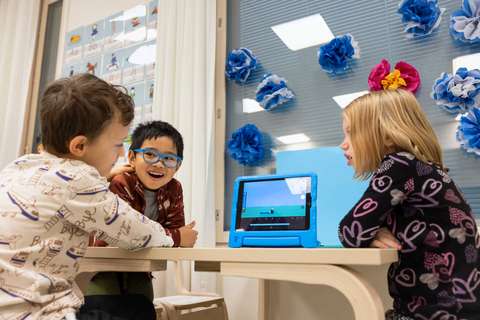Timely support in a child’s own pre-primary education group

Thanks to the learning support reform, children receive support in pre-primary education when they need it without having to leave their own group. The transition to the first grade has been made as easy as possible.
The reform of support for learning, which entered into force in August, brings clarity and flexibility to the support provided for children of pre-primary education age. Children are supported as soon as the need arises, without slow bureaucratic processes.
“Support is provided as early as possible, and timeliness is emphasised,” says Anni Kouki, special education teacher in early childhood education at Suurpellon päiväkoti.
The previous three-tier support system will be discontinued. The reform is based on the amendment to the Act on Primary and Secondary Education and applies to pre-primary education everywhere in Finland.
From the child’s point of view, everyday life continues largely unchanged. Support is provided in the child’s own group, in their familiar environment. In practice, this may mean small group activities and closer cooperation with special education teachers, for example.
“The change is not very visible in children’s everyday lives, but it gives us educators a clear framework and opportunities to respond faster,” Kouki says.
Less bureaucracy, more support
Early childhood education teacher Johanna Hartman also finds the reform positive and necessary. At Suurpellon päiväkoti, they have always paid attention to support, but now the practices and concepts are being harmonised nationwide.
“This has been a much talked-about and long-awaited change. Our practices will become more official, and bureaucracy will be reduced. Support is planned as part of the child’s daily activities, not as separate solutions,” Hartman says.
According to Early Childhood Education Specialist Marianne Leppänen, the aim of the reform is to ensure that every child receives the support they need as early as possible and in a timely manner.
“Support is primarily provided within the group through teaching arrangements and group-specific forms of support that support the prerequisites for learning. If this is not sufficient, more individual support is planned for the child,” Leppänen says.
In pre-primary education, group-specific forms of support are implemented in three different ways: general remedial teaching, remedial teaching in the language of instruction, and instruction provided by a special education teacher in connection with other instruction.
“Support is provided flexibly as part of the rest of the group’s activities. It is important for children to feel that they belong to a group,” Leppänen says.
Smooth transition to school
In Espoo, special attention is paid to a seamless learning path. Suurpellon päiväkoti, for example, works closely with the nearby school.
“School visits and joint events between children in pre-primary education and first-graders make it easier for children to start school. Children are less nervous about starting school when they are already familiar with the school and teachers,” Hartman says.
The cooperation has provided new insights for educators at Suurpellon päiväkoti. Previously, teaching focused on Finnish and mathematical skills, for example, but it has now become evident that there is an increasing need for practising emotional skills and the ability to work in a larger group. Children will learn to read and do math when they go to school.
“In pre-primary education, it is easier to divide children into small groups, because there are more educators. By contrast, school groups are large and under the guidance of one or two adults. This is something that children have to practise in pre-primary education,” Kouki says.